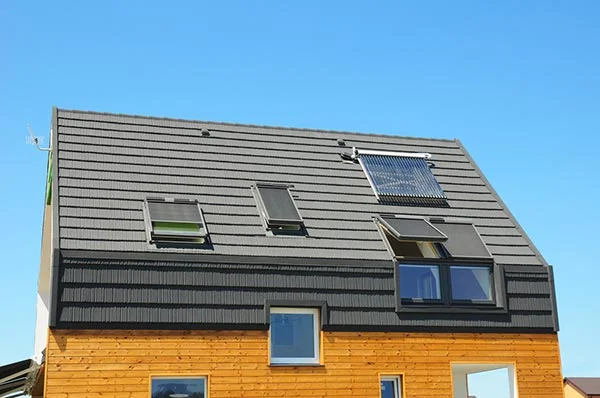Do you have the right type of attic ventilation to keep your attic cool and dry year-round?
Whether you’re repairing or replacing your roof, it’s worth it to spend time reviewing your attic ventilation options. If your attic isn’t properly ventilated, your home could develop major problems, from mold growth to a rotting roof deck. Choose the right type of vents, and your roof — and your entire home — will stand up to the elements without issues.
Why Is Attic Ventilation So Important?
Hot air is bad for your roof, insulation and your entire home, especially when it’s trapped in your attic. When hot air fills a stuffy attic, it can turn to condensation — moisture.
Moisture in your dark attic promotes mold growth, which can be detrimental to your health and can lead to rot. Moisture also soaks insulation and compromises its effectiveness. Moisture can cause roof decking to warp, felt to peel and shingles to buckle. It can ruin your entire roofing system.
In addition, a hot attic will cause snow to melt on your roof and drip down to the eaves, where it can refreeze and create an ice dam. Ice dams are a major cause of water damage.
A quality roof is built with a functional attic ventilation system that will last for years. Therefore, it’s important to hire a roofing contractor who knows which type of vents are right for your home.
The Benefits of Turtle Vents
Turtle vents are also called box vents or louvers. They are spaced evenly across your roof and installed close to the roof’s ridges.
This type of vent is extremely easy to install or add to an existing system. If your roof’s ventilation isn’t up to par, adding turtle vents could solve the problem. They’re also affordable.
When you need a few extra vents, turtle vents aren’t a bad choice. But if you’re designing an attic ventilation system from scratch, they’re not the best option. If they’re installed wrong, they could allow water to leak into the attic. They don’t ventilate as effectively as ridge vents, and some homeowners consider them an eyesore.
The Case for Ridge Vents
Ridge vents are typically the experienced roofing contractor’s top choice for a superior attic ventilation system. With turtle vents, roofers need one for every 150 square feet of attic floor space. With ridge vents, you only need one for every 300 square feet — their efficiency is double that of turtle vents.
Ridge vents can’t be seen from the ground — they’re fully integrated into the roof’s design. They’re not susceptible to leaks because of interior baffles that keep out precipitation while letting air flow continuously through the attic.
Call the Roof Doctor today, and get your attic ventilation system inspected. We will give you a free quote for all repair or replacement work.



